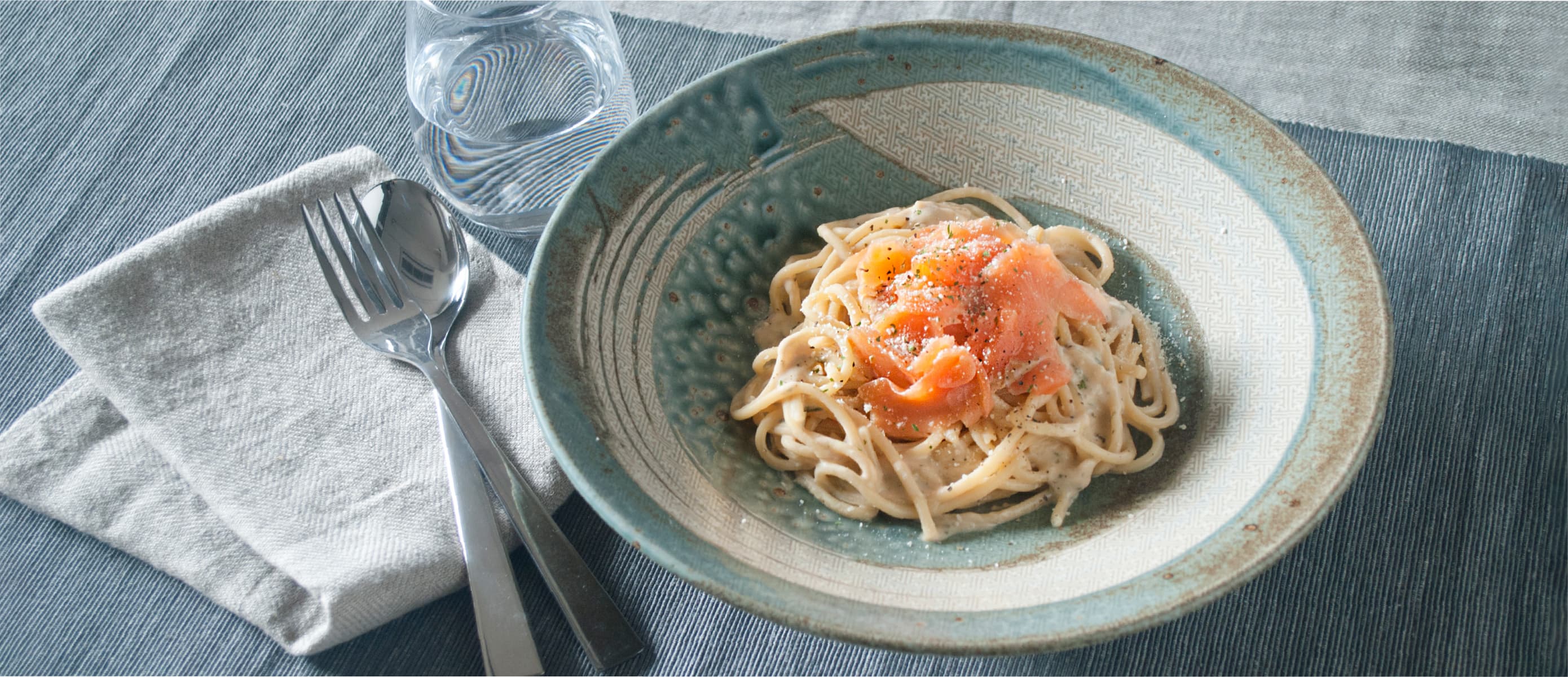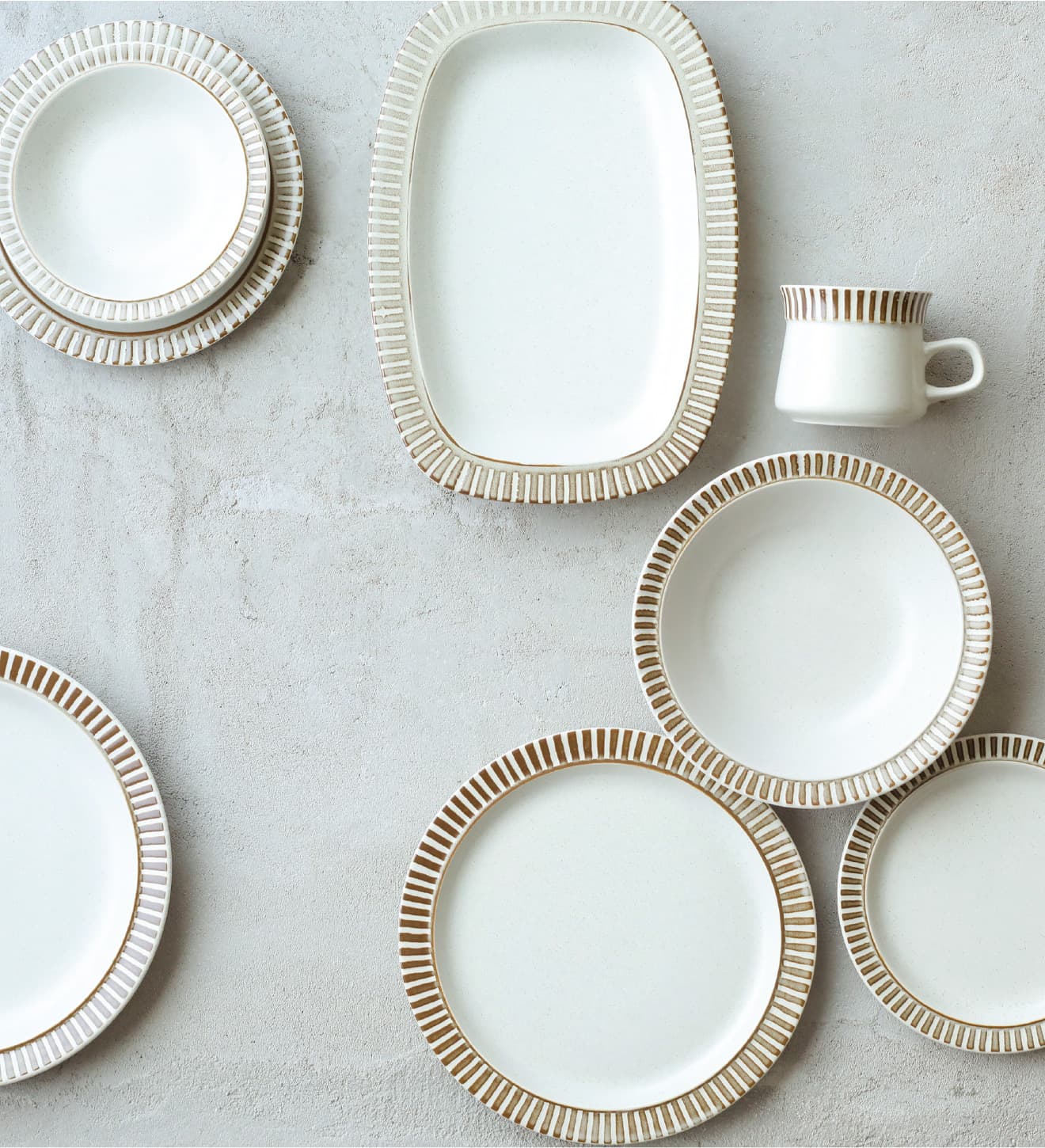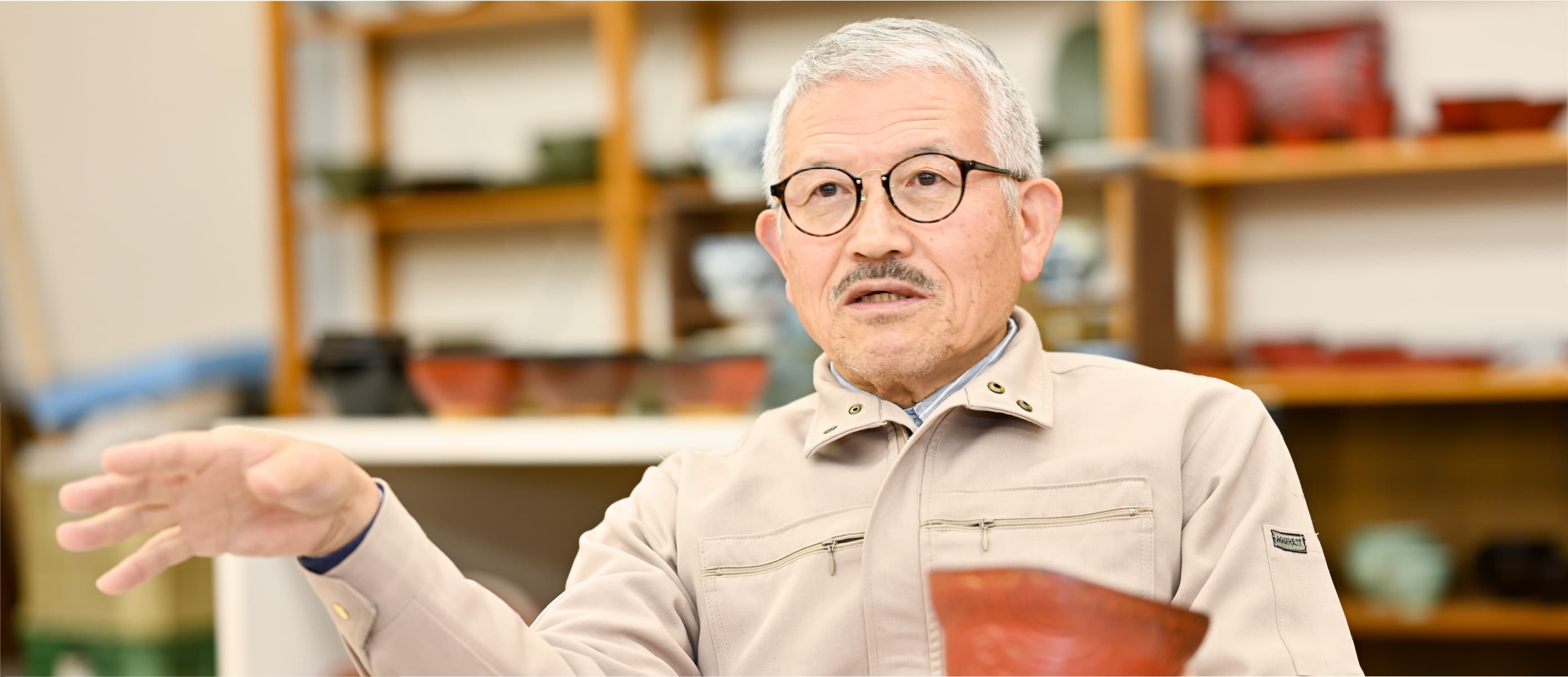Passion in creating tableware unique to this region
Stylish ramen bowls, fine painted elegant plates, rustic texture rice bowls are a part of the wide variety of tableware which are produced everyday by Showa Seito who does business through wholesalers and is located in Dachi-cho in Toki city, known as the town of bowls.
The history of Showa Seito started with first president Miyazo Kato in early 1900 (Meiji and Taisho era in Japan). At that time, pure white ceramics like Aritayaki (Aritayaki is a very famous porcelain in Japan) were popular so it was difficult to gain popularity by producing pottery using the dark soil from the Tono region. Miyazo came up with an idea, “Let’s make pottery which takes advantage of the characteristics of the soil” and then, started to study with the researchers at the Gifu Prefectural Ceramics Research Institute. Soon, they produced a completely new ceramic tableware which, for the first time in Japan, combined porcelain-like strength and warm texture resembling earthenware.
To commercialize and improve the product, he established Showa Seito in 1927.
The tableware called “Shotoyaki” had a warm texture and appeared new to costumers who were accustomed to white porcelain in the market and became so famous that even the Imperial Family purchased it. Japanese potter Hajime Kato who was designated as a Living National Treasure later on, also visited Showa Seito and Institute to study. This ceramic named “Stoneware” was produced before and during World War II. Export to United States became active after World War II and soon Minoyaki’s unique texture gained a good reputation. A joint work between American potter and Showa Seito named “599 Patio” series was a big hit and won the “Good Design Award” for the first time as Minoyaki. Showa Seito produced unique and innovative products by improving their skills to make ceramics.









